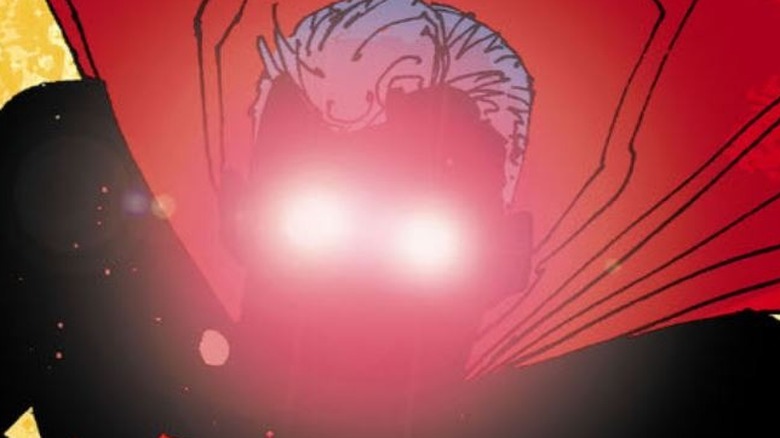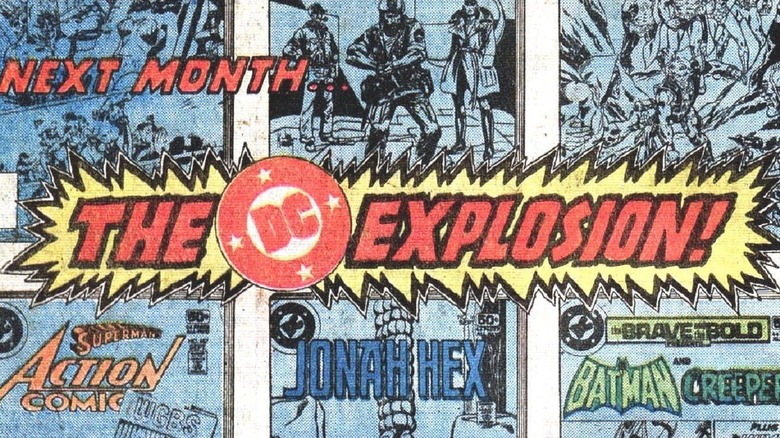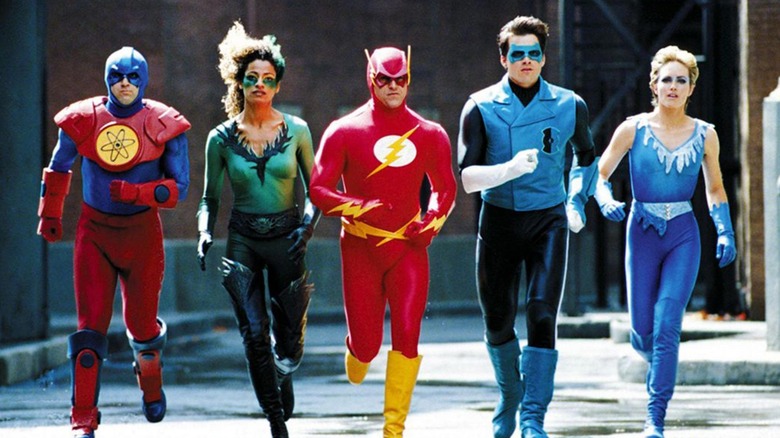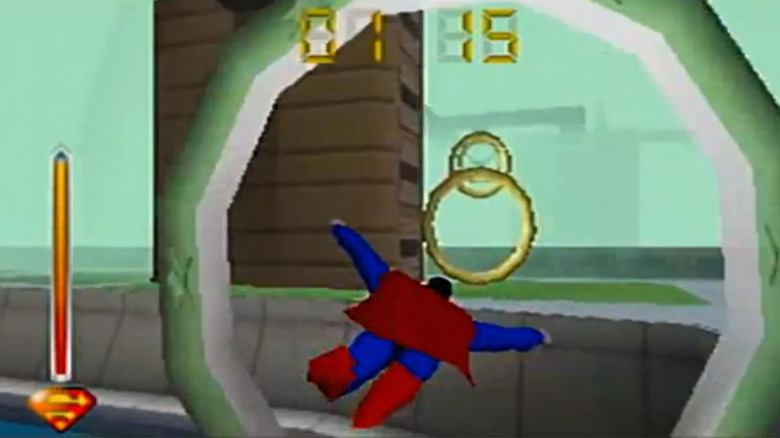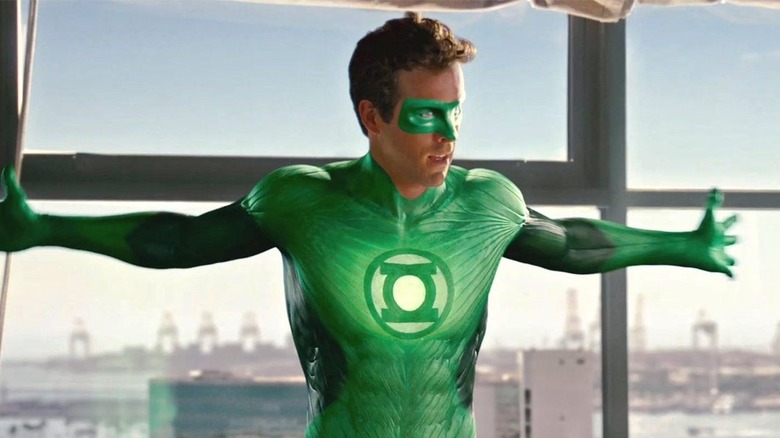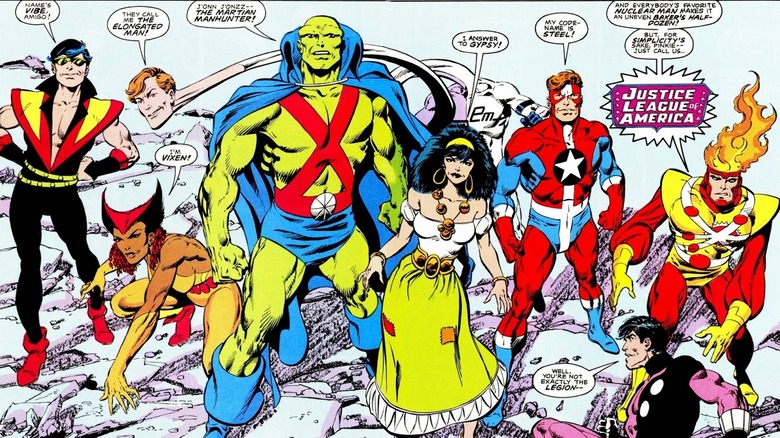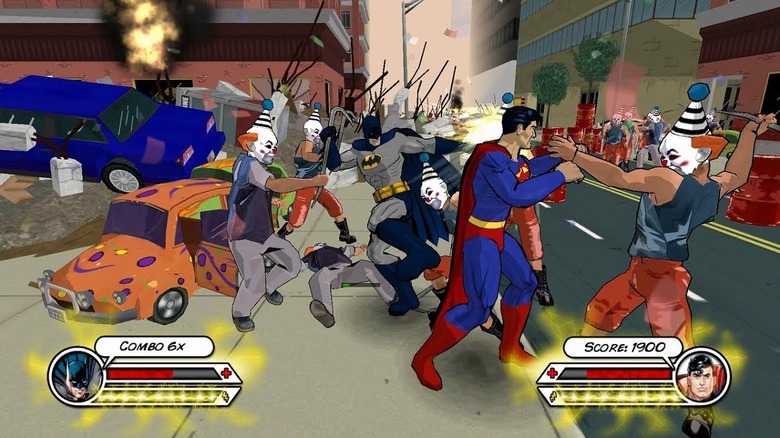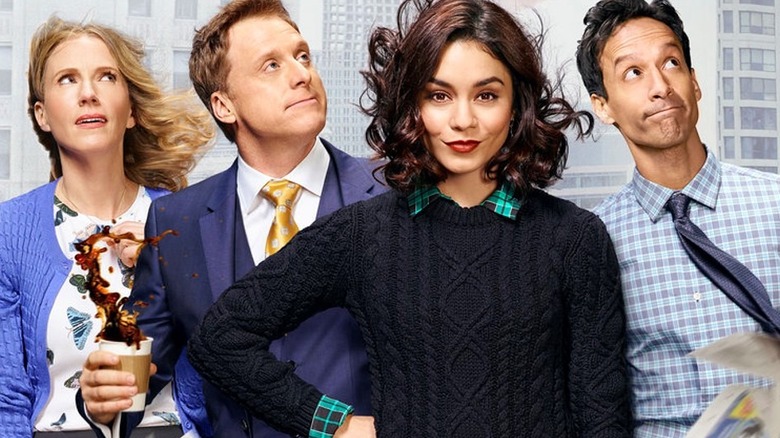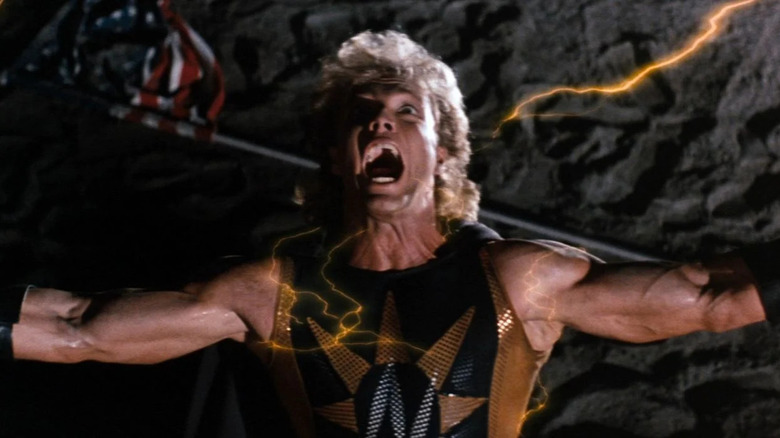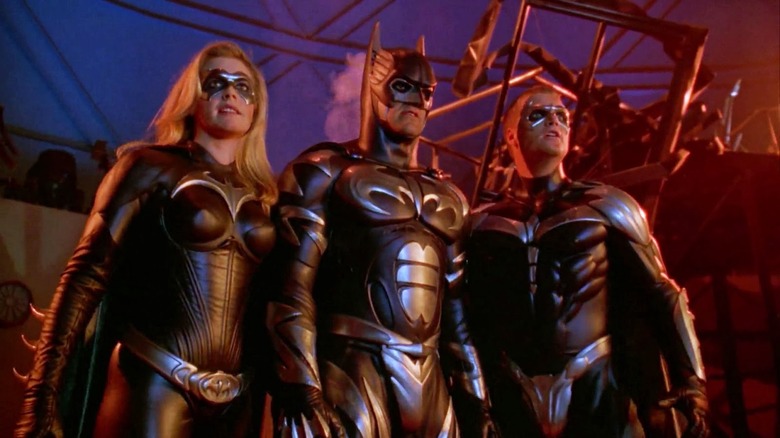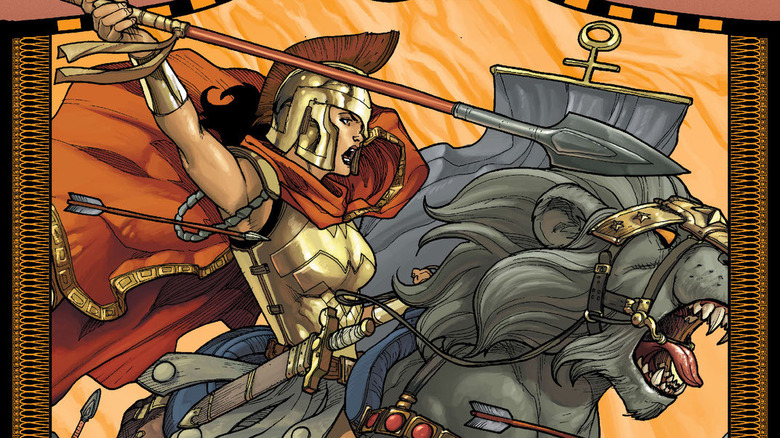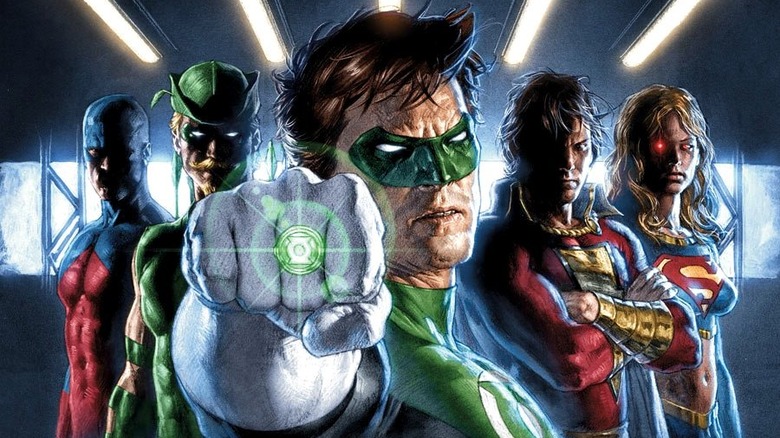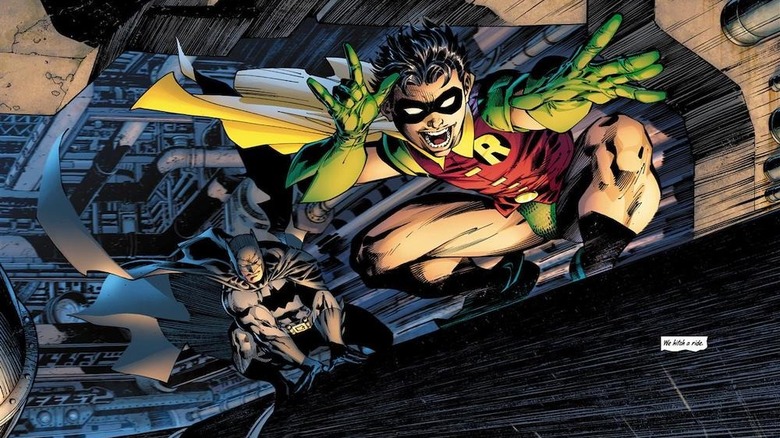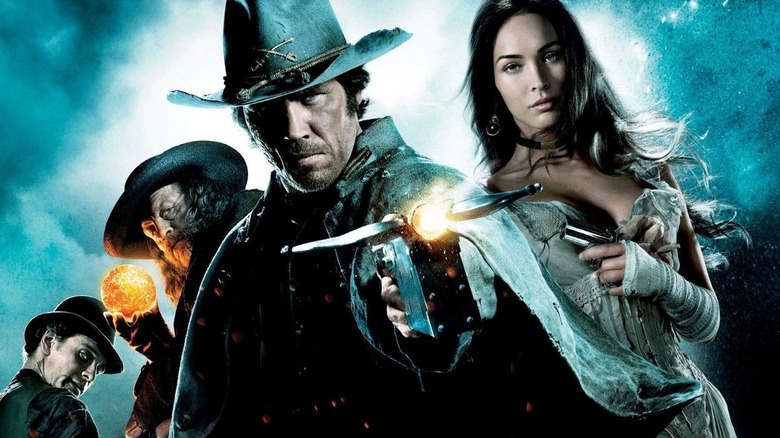The Biggest Forgotten Failures Of DC
When a creative company has been around as long as DC Comics, it's inevitable that they produce a few duds, regardless of their number of noteworthy successes. Though many of these failures are still discussed today, many have been left forgotten as newer generations grow older, with others overshadowed by more recent controversies that have left little room or time for them in contemporary discourse.
It can be hard to remember or even hear about just how truly painful reading "All-Star Batman and Robin, the Boy Wonder" was in the early to late 2000s while everybody is busy debating the pros and cons of Ben Affleck's Batman or attempting to predict where Robert Pattinson's version of the character will go in the years to come. Misery loves company, and there's a lot on this list to go around.
Thankfully, the lengthy memories of long-time fans have kept these tales from full-scale oblivion, so for those whose recollections have faded, or newer fans who've yet to experience the history, here are the biggest forgotten failures of DC Comics. Time may heal all wounds, but for injuries like these, it's worthwhile to occasionally pick the scabs.
The 1970s DC Comics Implosion
For comic books, the 1970s brought with it a maturation in both content and storytelling that drove sales wild. No longer intended only for children, those who grew up reading the books found they could still enjoy them while simultaneously introducing them to their own kids. With this success came expansion, but DC's attempt to capitalize and finally eclipse their chief rival, Marvel Comics, nearly destroyed the company.
In 1978, the company announced their "DC EXPLOSION!", a marketing and publishing campaign that sought to increase their market share by publishing more ongoing series, an effort that had actually already begun three years earlier. From 1975 to 1978, DC Comics added 34 new titles to their line of comics, but after two horrific winters back-to-back in 1977 and 1978 that devastated supply lines, decimated sales, and further exacerbated already-rising production costs, DC Comics was forced to cancel over thirty of their ongoing series and bin nearly a dozen more still in production.
Nearly bankrupt, DC Comics was also forced to lay off an unfortunate percentage of their staff. When all was said and done, their "Explosion" of new titles in 1978 ultimately became anything but, giving rise to the name this event is still known as to this day: "The DC Implosion."
The first live-action Justice League movie ... no, the other one
Joss Whedon/Zach Snyder's live action "Justice League" film(s) was divisive to say the least, but it was a vast improvement upon the closest it had to a precursor: CBS's 1997 made-for-television "Justice League of America" movie. It was meant to act as a pilot for a full television series, but it's abysmal quality ensured that would never happen.
This version of the superhero team included the Flash, Green Lantern, the Atom, Martian Manhunter, Fire, and Ice. Their uniforms were relatively decent for the time and medium they came from, but they still didn't mange to avoid looking like cheap, store-bought Halloween costumes, and though the story ostensibly centers around the team's fight against a supervillain named "Weather Wizard," the plot spends most of its time trying to be a somewhat standard '90s sitcom that just happens to feature superheroes.
The team all live together in the same building, and the majority of its runtime is devoted to their attempts to navigate their fairly underwhelming personal lives as they fail at both careers and love. The movie frequently cuts away from whatever is happening onscreen to show random interviews with the heroes in their civilian identities, a la "The Office" (even though it predates both versions of that show by several years). There seems to be one massive flaw with this device: They all have secret identities, so who's interviewing them?
The effects are wonky, Green Lantern threatens to disembowel the villain with a chainsaw, and the Atom literally limbos underneath a security beam. Viewer discretion is advised.
Superman N64
In 1999, video game developer Titus Interactive released "Superman: The New Superman Adventures" for the Nintendo 64. Despite the wordy, redundant title, the game is more commonly known as either "Superman 64" or "the worst video game ever made." Gamespot gave the game a 1.3 out of 10 and said that "It serves no purpose other than to firmly establish the bottom of the barrel," while IGN's review flat out told its readers, "Do not buy this piece of garbage."
The game was broken from the ground up. The controls were unintuitive, difficult to handle, and often simply didn't work, making the harshly-timed flying sequences almost impossible to navigate. The game was also plagued with bugs that would commonly result in lagging, stuttering frame rates, and its graphics, which were bad even for the time, often made it impossible to see thanks to the thick fog that constantly surrounds the player.
Basically, even if the game somehow worked properly, players still had to fly blind with a character they could barely control in a timed race that had to be executed perfectly in order to win. And that was just the first level.
Catwoman film
In 2004, Halle Berry became "Catwoman" in theaters across the world, except for one problem: she wasn't anything like the character fans had been reading about in comic books since 1940. She wasn't Selina Kyle; she was an original character named Patience Phillips. She wasn't a fiercely independent career criminal or cat burglar; she was a shy, timid fashion designer who discovers a dangerous plot to release a deadly ... skin cream.
She's murdered to cover it up, but just so happens to wash up on a beach after she's miraculously resurrected by a random magical cat who grants her feline superpowers, thus establishing her only connection to the classic comic book character: her superhero name. She shares none of her inspiration's anti-hero qualities and instead becomes a straightforward hero in one of the most poorly designed costumes to ever plague the silver screen.
The film's attempts at feminism are humiliating, and it earned its 9% Tomatometer and Razzie "award" far more thoroughly than any of the actors involved in the project deserved. If there's a silver lining to how divisive and controversial nearly every single DCEU film has been so far, it's that previous entries like "Catwoman" are becoming even more completely forgotten.
Green Lantern film
To say that 2011's "Green Lantern" was a mess is a bit of an understatement. With the MCU still fresh on the block, the movie was somehow meant to serve as the foundation for both its own trilogy and an expanded DC cinematic universe of films as well. It was a lot to ask of a single film with an unproven character — and with a rotten, 26% Tomatometer and a box office total that was half the amount needed for the film to break even, it's safe to say it failed.
The movie didn't so much tell a story or roll out a plot as much as it delivered nearly two hours of exposition, ensuring that anybody who stayed awake throughout the whole film had a solid primer for a hero that wouldn't be returning to the silver screen anytime soon. Unfortunately, even an impressive cast starring the likes of Ryan Reynolds, Blake Lively, Peter Sarsgaard, Tim Robbins and Mark Strong weren't enough to outweigh the badly-designed CGI Green Lantern uniform or the hungry, evil space cloud that served as its main villain.
More than a decade later, "Green Lantern" is primarily remembered because of "Deadpool" jokes and the fact that it's the set where celebrity super-couple Reynolds and Lively fell for each other.
Justice League Detroit
When the Justice League was first created in 1960, it featured DC Comics' most popular characters together in one series, but as sales began to decline after over two decades of continuous publication, editor Dick Girodano, writer Gerry Conway, and artist Chuck Patton decided it was time to shake things up. To this end, they looked to George Perez and Marv Wolfman's best-selling "New Teen Titans" series for inspiration, and came to the unfortunate conclusion that the only way to save the JLA was to appeal to the youth.
To this end, they had Aquaman disband the large, classic JLA roster in 1986's "Justice League of America Annual" #2, move the team to Detroit, and form a lineup that consisted of four previous members (Aquaman, Martian Manhunter, Firestorm, and Elongated Man) and four new, original characters (Vibe, Vixen, Gypsy, and Steel). Though the line-up had promise, the new characters' attempt to be "hip" gave the era a very distinct, "How do you do, Fellow Kids?" vibe that it was never able to shake off.
The most infamous of these moments came in that first issue when Vibe boldly declared his love of the latest trend: breakdancing. The creators took a style of dance known for its impressively quick and agile movements and attempted to realize it on the static, unmoving comic book page. It didn't work particularly well, and the series was cancelled not too long afterwards.
Justice League: Heroes United
In 2006, Snowblind Studios released "Justice League Heroes" for the Xbox and Playstation 2. It was the team's first full, dedicated modern video game, and it was fairy well-received. Then, in 2009, Global VR tried to capitalize on that success by releasing a horrendous arcade cabinet game titled "Justice League: Heroes United."
It was a two-player, sequential hallway brawler that was populated with character models hosting improbable anatomies that were cell-shaded to the point that they looked like oversaturated blobs. Though the controls for the game were unintuitive, the most frustrating element may have been its third-person camera, which only sort of followed the player character, could not be rotated to look around, and flipped itself end-over-end when it had to round a corner.
Combined, these elements made actually playing or beating the game a frustrating, unrewarding experience that often left players unable to actually hit any of the game's enemies. Thankfully, the company's distribution model was just as decrepit as their gameplay experience, and very few of the cabinets ever actually made their way to arcades.
Powerless
When the show was first announced in 2016, "Powerless" was a sitcom set within the DC Comics universe that would follow the employees of an insurance company that handled claims covering damage from superpowered battles. Starring Vanessa Hudgens, Danny Pudi, Christina Kirk, and Alan Tudyk, this version of the show's pilot received positive reviews; it was interesting, fresh, and funny. Everything a fan might want from a show like this.
Then the series creator, Ben Queen, departed the NBC series due to creative differences, and the premise was changed to follow the employees of a tech development subsidiary of Wayne Industries. The new premise was received far more poorly than the original, and the series was never able to truly recover. Its first episode aired in February, 2017, and by April, the show was cancelled.
What makes the poor handling and ultimate cancellation of "Powerless" such a tragedy is the fact that the show was, even to this day, so unique. In a world where countless Marvel shows are airing on Disney+ and the CW's drama-filled Arrowverse shows have been on air for over a decade, a sitcom set within a superhero universe is still a fresh, new, entertaining idea in both of its iterations. Sadly, scheduling changes and conflicts meant nobody watched it, so the idea is gone; for now, at least.
Superman IV: The Quest for Peace
When Christopher Reeve's first "Superman" film came out in 1978, it was a sensation unto itself and is still, to this day, one of the best examples of a superhero origin story. Its sequel, "Superman II" was also a hit, but the third film in the series, "Superman III" was received quite poorly. Not wanting to end the series on such a low note, Reeve agreed to do a fourth film after being promised more creative control over its story and direction.
He wanted to do a story revolving around the nuclear arms race because of breakdowns in disarmament talks at the time, but thanks to difficulties with multiple directors, a budget that was suddenly cut in half right before production began, and running out of money before the film was complete, the movie that released in theaters was nothing like he had envisioned.
"Superman IV: The Quest for Peace" was a mess. The plot was nonsensical, the effects were egregiously terrible, and the box office revenue was barely enough to cover its expenses, let alone make a profit. This film killed Superman movies for decades, and though fans today might be more preoccupied by Zack Snyder's dour take on the Man of Steel, this unfortunate mistake should not be forgotten.
Batman and Robin
"Batman & Robin" is a terrible film. It gave the costumes anatomically-correct details like molded rubber nipples, had the Caped Crusader use a "Bat Credit Card," and killed Batman films for nearly a decade. The film's director, Joel Schumacher, was still apologizing for the film decades later.
It was campy to an insane degree, featured strange versions of too many characters, and was near universally panned by critics and fans alike despite its meager box office success. Ice machines are inexplicably powered by diamonds, thin plastic lip coverings are enough to stop the world's deadliest, kiss-transferred neurotoxin, and the numerous, constant changes in both costume and transportation were included for no other reason than to sell additional merchandise.
Thankfully, time has helped this wound sting less and less as the years drag on. Debates over more recent Batmen like Affleck and Pattinson help fans forget the film, and "so bad it's good" movie-watching culture has helped those who do remember it laugh at the "film," if only to keep from crying.
Amazons Attack
In 2007, DC Comics decided to release a Wonder Woman-centric comic book crossover event titled "Wonder Woman: Amazons Attack." The story revolves around the ancient Amazonians of Themyscira, well, attacking the rest of the world. It turns out to be the plot of a shapeshifting sorceress named Circe who masqueraded as the Amazonians' leader and queen, Hippolyta, but the war raged nevertheless.
There were a few key problems with this story, however. To start with, it barely featured Wonder Woman at all. As if that wasn't enough, the miniseries was a direct tie-in to one of the most infamous comic books that DC Comics has ever published: "Countdown to Final Crisis." One of the series' few strengths was to show the Amazons utilizing all kinds of creatures from Greek Mythology as magic war machines, but the cool factor is pretty thoroughly nullified by the fact that the attacking Amazonian soldiers openly kill children in the streets. Not a particularly heroic action for the people who gave the world Wonder Woman.
Discussing one Amazonian superweapon, Batman inadvertently coined a cheesy meme: "An Amazon attack, a deadly BEE weapon ... Bees. My god."
Cry For Justice
Before it became the miniseries, "Justice League: Cry for Justice," writer James Robinson and artist Mauro Cascioli "Justice League" project was meant to be an ongoing series that featured a roster of DC's heroes who wanted to take a more proactive approach to crime fighting. They didn't want to have to wait until a supervillain had committed some deadly terrorist attack; they wanted to take them down before.
Instead, fans got a series where the first issues consist of an entire cast of characters finishing their individual narratives within the comic by simply shouting the word "JUSTICE" at the sky as if that meant something regardless of context. It also featured the Justice League, the so-called "heroes," torturing multiple supervillains without consequence.
If that wasn't bad enough, the aftermath of this series kills the child daughter of Roy Harper, Green Arrow's first sidekick, and causes Roy to relapse into heavy drug use. The series wasn't just not what fans had wanted — it was a massive, convoluted combination of things that they most certainly did not want.
All-Star Batman and Robin, the Boy Wonder
Surprisingly, the horror that is "All-Star Batman and Robin, the Boy Wonder," was somehow created by two of the most beloved Batman creators of all time. Jim Lee's art is famous across the comic book industry for its stellar quality, and Frank Morrison's previous work on the Caped Crusader, "Batman: Year One" and "The Dark Knight Returns," are considered two of the best Batman stories ever written. They helped transform the character into the brutal knight of vengeance that fans know today, but "All-Star" takes that trend to a painful, regrettable extreme.
This version of Batman is practically psychotic. He literally kidnaps Dick Grayson, forces the child to become Robin, and traps him inside the Batcave with nothing to eat but rats. If that wasn't bad enough, he's also a sadistic monster who spends the vast majority of his inner monologues detailing the gruesome ways he's beaten and crippled Gotham's many criminals, and that's all on top of the series' cringe-worthy dialogue, mind-numbing plot, and extraordinarily problematic presentation of its few female characters.
It's easily Batman's worst story ever, and one that both DC Comics and its readers wish they could forget. Thankfully, time has helped this story fade into relative obscurity. May it forever stay there.
Jonah Hex
Josh Brolin is famous among fans of superhero cinema for his stellar performances as Thanos, the arch-villain of the Marvel Cinematic Universe's ground-breaking "Infinity Saga," but before he wore that iconic purple chin, he sported a half-burned face as "Jonah Hex" in 2010. In the comics, Jonah Hex is DC's most popular Western-themed character and thrives in stories set within that genre, but instead of getting something along the lines of "The Good, the Bad, and the Ugly" or "Django Unchained," fans got a pseudo-mystical outing with a science fiction superweapon to top it off.
The film was a commercial and critical failure of the highest order. It made back only one-fourth of its $47 million dollar budget and earned a 12% critical rating on Rotten Tomatoes. Audience receptions weren't much better due to its horrific pacing and the strange, unnecessary changes it made to the character and his franchise. Instead of being a gritty, wild-West ranger, this version of Jonah Hex had magic powers that allowed him to temporarily raise people from the dead, and instead of featuring in stories revolving around the dangers of the far-flung frontier, this plot revolved around a secret, Confederate plot to destroy all of Washington DC with a giant cannon.
At the end, the president tries to make Hex the "Sheriff of the United States," and that alone sums up this film rather perfectly.
